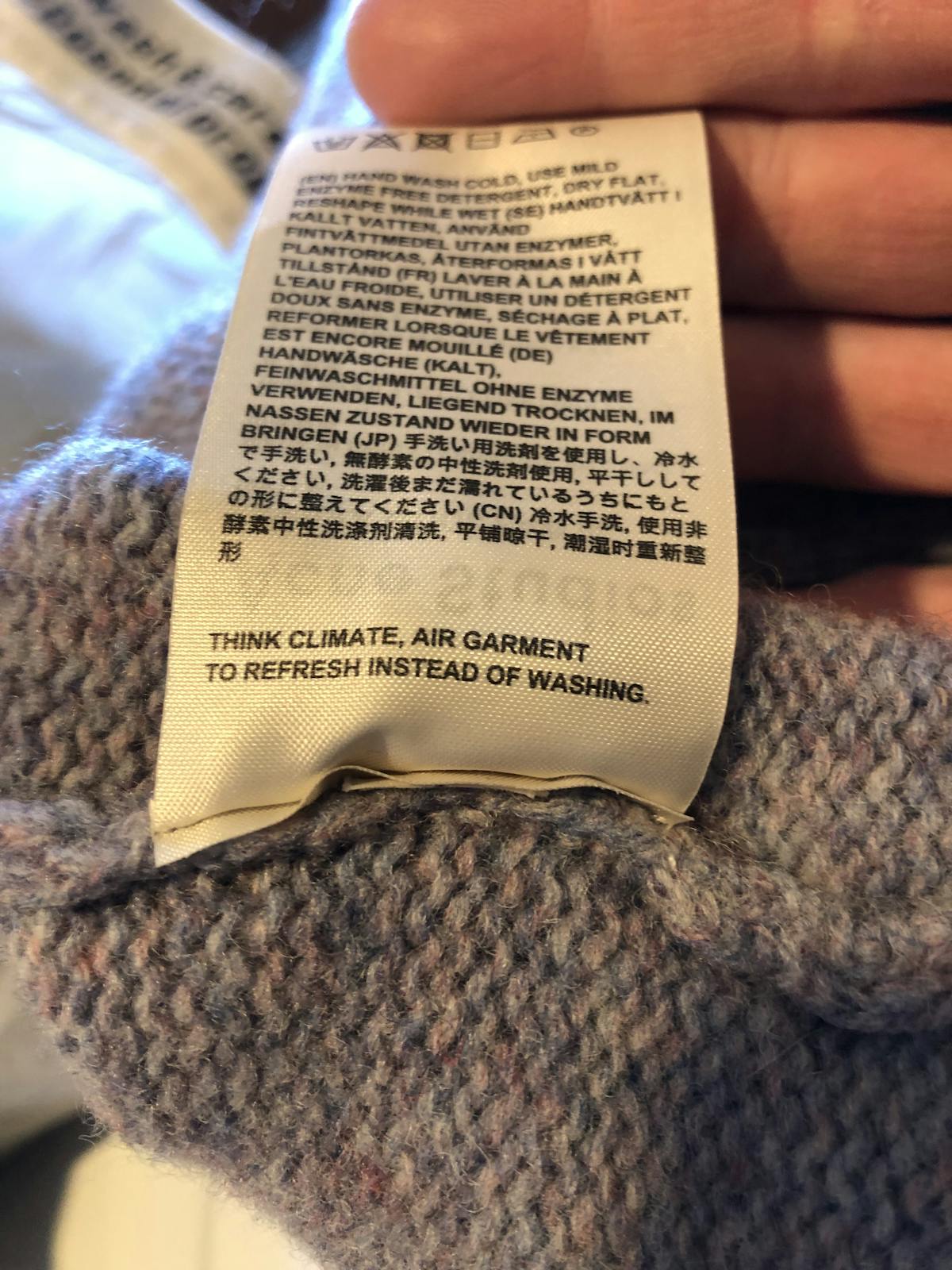We’ve all been there: just going through your normal laundry routine, maybe doing some minor sorting of light and dark colors (you know, the usual) when a little label you swear you’ve read a million times over jumps out… Wash inside out. Lay flat to dry. Stretch while wet.
“Wait.” you think to yourself, “Every time? Oh wow, how long have I been doing this wrong?”
“Forever, that’s how long” you hear your partner’s voice chime in.
If it were last year, maybe I would just keep sorting, keep loading, keep my head down and pretend my wife wasn’t right. But it’s 2022—it’s a new year, and I’ve turned over a new laundry leaf. Plus, I’ve learned my wife is almost always right about me being wrong. Yes, even with laundry stuff.
And after almost a week of following my garments’ care labels to the letter, I’ve also learned more than I ever thought possible about taking care of the clothing that I own. Did it take forever reading every label? Yes, yes it did. Was it worth it? You be the judge: check out some of the tips and techniques I found most useful.
1. Separate your laundry by fabric type.

If you’re like me, this might feel counterintuitive since I grew up being told to sort piles into light and dark colors (which is still important if you’re washing a garment that is not colorfast. Always read the care label.) But you’ll always do a better job of cleaning and extending the life of your items by breaking out your laundry into delicates, towels & bedding, synthetics, cotton, etc. since you’ll be using the same water temp, wash cycle and drying cycle (if needed).
2. Turn your clothing inside out before you wash it.
This is something I must admit I knew I was doing wrong, but couldn’t be bothered to actually do. What a fool I’ve been. This step will extend the life of denim washes, screen printed tees, tie-dye and pretty much any other type of fabric dye. Oh, you already turn your clothing inside out when you take it off? Go you. You get it.
3. Hang dry as often as possible.

If you are blessed to live in a building with a clothes line, do not let that magical device go unused. You have been given a gift, and it would be a crime not to use it. I say this from experience: my house has one and it’s the best. I still use my wooden drying rack quite a bit (because it’s winter here in North America, and your wet laundry will eventually dry outside, but not before freezing... and that’s probably not something the maker/manufacturer intended). This goes hand-in-hand with the inside out wash: it not only extends the life of your garment by keeping it from the "rough and tumble" world of the clothes dryer, but it also saves energy and that’s rad.
4. Washing your wool often? Get special detergent.
Now hopefully you’re not washing wool items too much, but if you find yourself running loads of the same few favorite sweaters, it’s best to do a little research and get a wool-specific detergent. Coming clean here: this is a tip passed on to me by Dutch Label Shop pro Nicole, who only wants the best for my wool jumpers. I tip my hat/knit beanie to you.
5. Stretch your wool and lay it flat to dry.

Depending on the strength of your machine’s spin cycle, your wool garments will undergo some shrinking after every wash. The best way to ensure your items retain the same size and shape is gently stretching them out while they’re still damp, then do actually lay it flat to dry out fully. If you hang a wool item, it will take the shape of whatever it’s resting on. Once the item is dry, you will not be able to remove that weird bump that came from the chair you draped it over. Important: Most industrial laundromat washing machines are much too intense for washing wool. The centrifugal force their spin cycles generate is enough to shrink almost any wool garment, so consider hand washing if it cannot be adjusted.
6. If you’re washing synthetic fabrics (like activewear), get a Guppy Bag.
This isn't a washing instruction so much as it is a smart thing to do for your local watershed. Every time your synthetic clothes go through a wash cycle, they shed tiny bits of themselves into the waste water that goes into your sewer and out into the world. Those microplastics then end up in the fish we eat (and the things that eat them, in turn). The best way to keep that garbage out of our water is to use a Guppy Bag to wash synthetic fabrics, and then hang them to dry. Another tip: you may not ever want to give up your leggings, but think about slowly swapping out as much synthetic clothing for natural fiber clothing (like merino wool) as you can.
7. Try hanging clothing outside to refresh instead of washing.

This last tip is a lot like #6, and I think it's so cool that Acne actually put a climate-conscience direction on a care label. Best of all? It actually works. Now, this isn’t always an option if you live in an apartment or somewhere that doesn’t afford you any outdoor space, but even hanging something near an open widow can help you skip a wash. There are some who even recommend not washing items at all, like denim, but hanging them outside to refresh instead. I’d love to see a care label for that!
Have a sure-fire care label instruction you think we missed, or maybe you want to take the Care Label Challenge yourself? Let us know on Facebook & Twitter.













